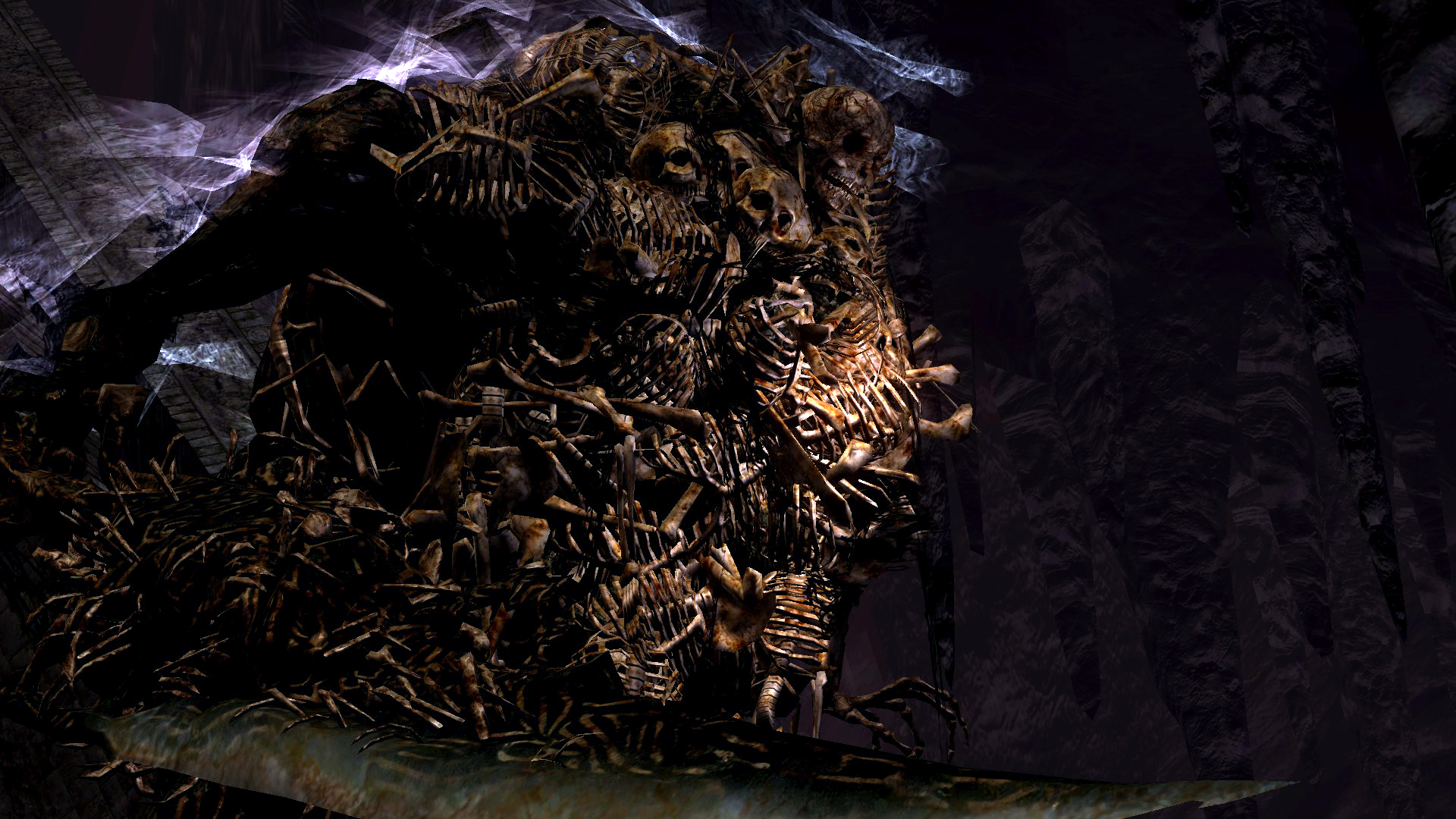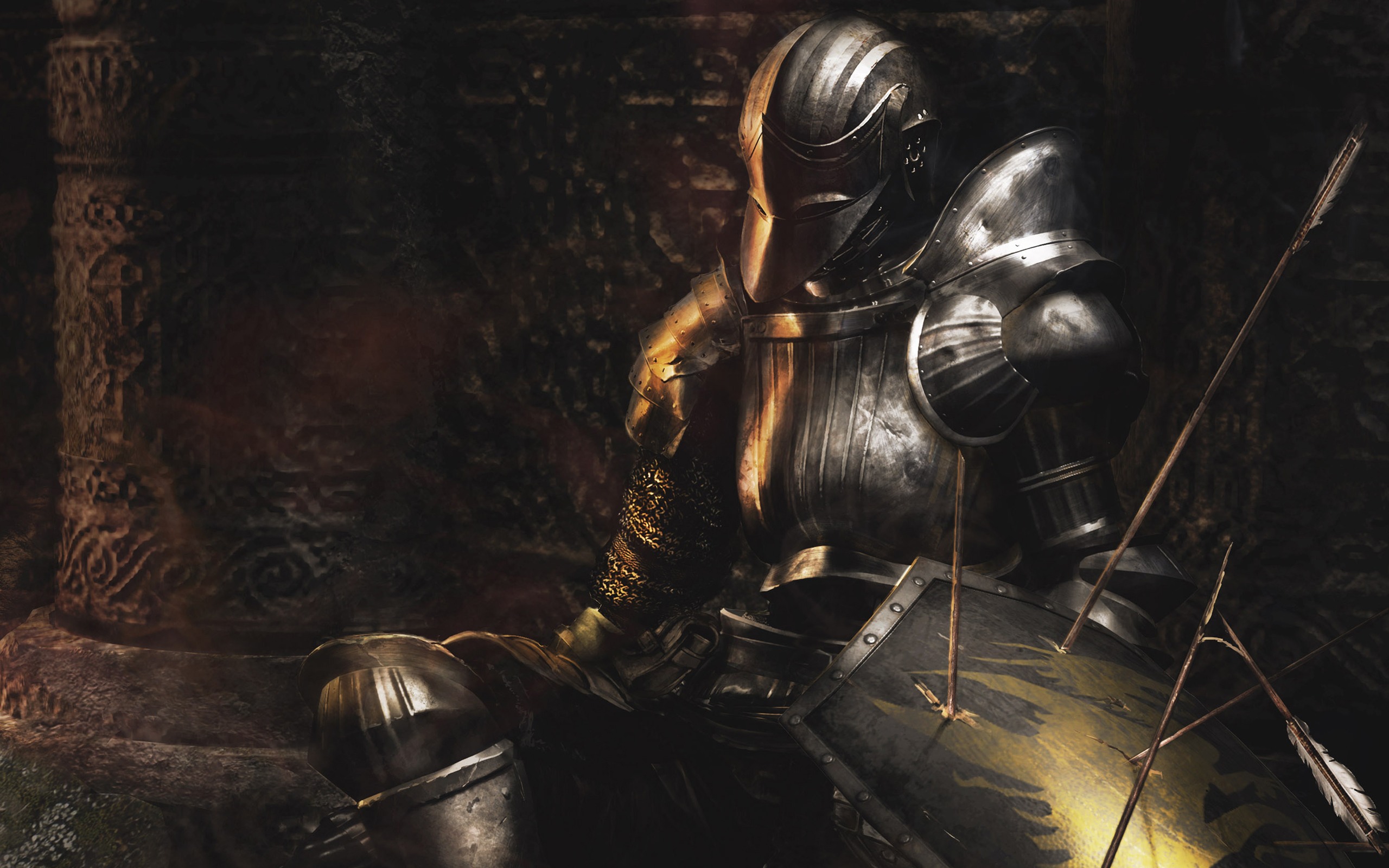Bloodborne, the highly anticipated title from veteran adventure game designer Hidetaka Miyazaki, hits store shelves March 24th, and the hype is at critical mass. It’s “THE” big PS4 game this year, and if its anything like its spiritual prequels Dark Souls and Demon’s Souls, it’ll deliver on all fronts.
Demon’s Souls hit the scene with relatively little fanfare, letting its cult status create a sort of mystery about it. Then Dark Souls came on the scene and blew everyone away. Since then, the Souls games have been more than just great to play, they’re full fledged phenomenons. Why? Because they’re the best survival horror games to come out in years.

“Wait,” you say to yourself. “Dark Souls is a survival horror game?” Well, maybe not in the “Trapped in a Mansion/Police Station/Spaceship” sort of way, but Demon’s Souls and both Dark Souls titles evoke those old atmospheric and mechanical tropes of the genre when it was at its prime and does it better than anyone game in recent memory that could be classically labeled the genre.
The Visuals
The visionary artists that designed the environments, enemies, and NPCs throughout the games are a huge part of the lasting effect the games leave on players. The worlds to travel are diverse, taking you from dark sewers to lush forests to ancient mountains. Each one familiar in basic ways, but so unique and interesting in the subtle nuances and the amount of detail in such small things like leaves on trees or bricks in a wall. The wilderness can be so serene that you feel like the first person to step foot in it in eons. In large keeps where big battles were waged, bodies of the deceased serve as a morbid picture book describing the events that took place.
The visuals in the Souls series are always used to inspire, not necessarily gross out. Creatures more often evoke awe than “eww”. Creatures like Seath the Scaleless, a giant albino dragon, leave you know choice but to admire the sort of twisted beauty the Souls universe can possess. Gravelord Nito, and its mossy robe of skulls, is a grotesque reminder that these are games in which you die a lot.

The Difficulty
Dying a lot isn’t completely the fault of overpowered enemies. Much of the challenge in the Souls series rests upon your ability to use what the game gives you tactically so you can survive. It has a strict set of rules: when you die, you drop your “souls” (read: currency) and if you want it back, you’ll have to start from your last checkpoint and get it the hard way, as everything you just killed up to your last sword swing has respawned. This urges you to be careful, and be aware of all of your movements at all times. Each enemy attack is potentially fatal, and they will use said attacks liberally and with sinister intent.
Souls games also don’t explain themselves to you, past the basics of how to interact in their world. Giving value and meaning to said interactions is entirely up to the player. Successful survival in these conditions require more than just having more ammo and a big enough gun. More than many modern survival horror games have been able to claim.
The Tension
The visuals and difficulty meld together to create the sort of tense experience left behind long ago in the Shinji Mikami age of video games. While Resident Evil or Nightmare Creatures could be considered horror games because of their respective themes, what made them “survival” horror games had everything to do with this tension.
It wasn’t that some terrible t-virused creature had its guts hanging out or was wearing a person’s face that was the real issue. The problem came because you weren’t so sure when you were going to see it, and if you had enough in your inventory to deal with it if you did. That balance between the scarcity of resources and the abundance of dangers made these games a puzzle for both your brain and your spirit. And maybe not classically a “horror game,” no modern game tests all parts of your brain quite like any entry in the Souls series.
It may arguably do it better than even the best survival horror classics in their hayday. As old Resident Evil games relied on puzzles and random pick ups to add different layers of suspense and story telling, the Souls games tell its stories organically. A sword’s description maybe all you learn about the creature who wielded it. You didn’t have to line up effigies or remember number sequences to find him either, but beating him in combat was the real puzzle. No breaks in the action in order to challenge you, it let’s the action speak many different languages, and interact with you in many different ways.

Dead Space thrives off of the idea that, in your claustrophobic environments, you are never safe. Your always a step away from a surprise attack. Your menu doesn’t open a screen that stops play, it projects from your helmet, forcing you to stay alert. Souls games similarly can’t be stopped. Unlike Dead Space, though, you can’t stomp away enemies in order to create safe spots. You have to deal with them head on, and when you die, they return to give you the same exact challenge you failed, now with less stuff in your possession.
Bloodborne looks to be keeping up this new trend of slowly gentrifying the survival horror genre and turning it into something worth exploring again. Let’s hope the mission continues to be a success.
What are you’re favorite Souls moments? Comment below or tweet @CurseGamepedia with your best survival stories.
